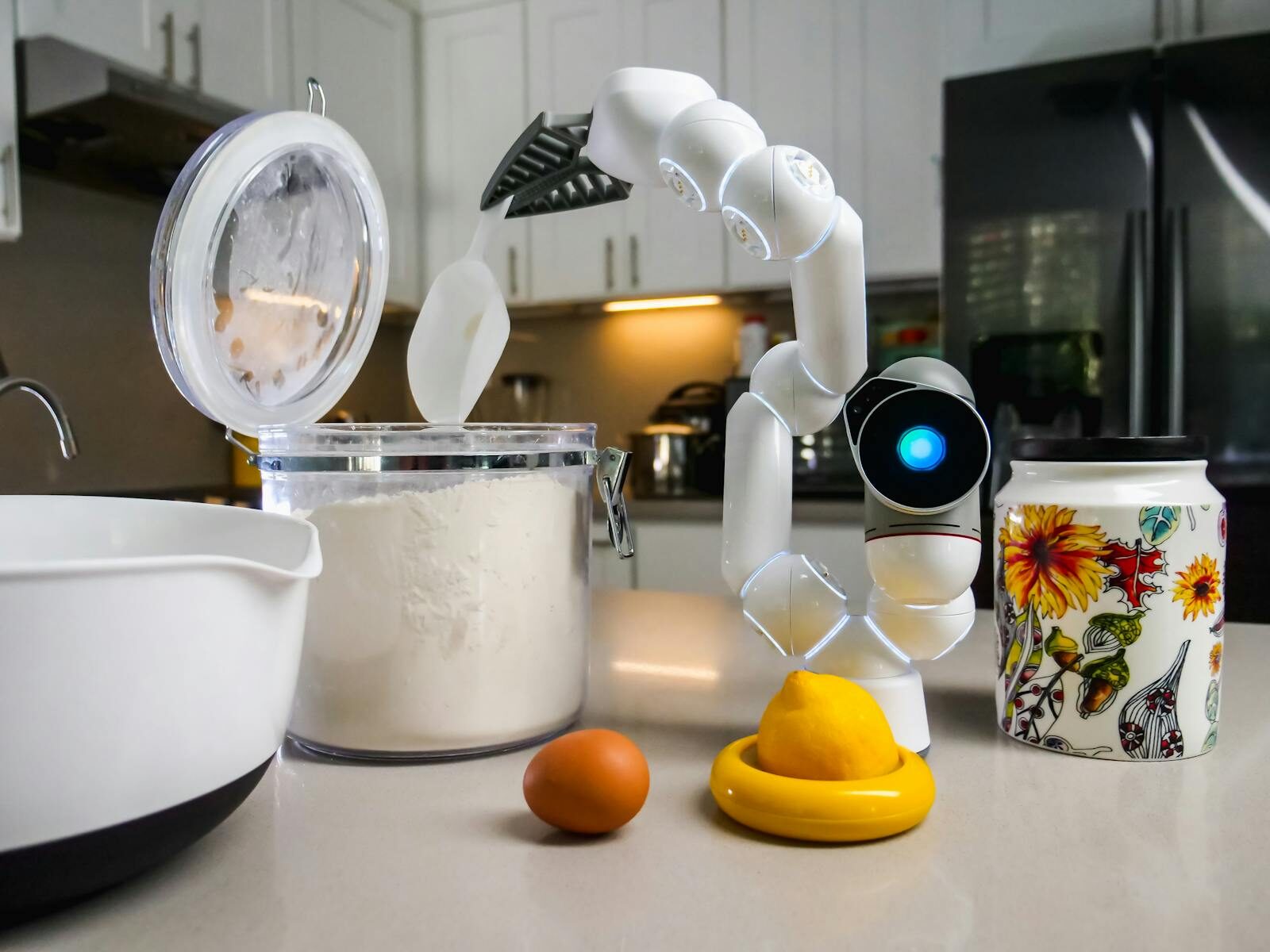Understanding the Need for Kitchen Robots in Busy Families
In today’s fast-paced world, juggling work, family, and personal time can be a daunting challenge, especially when it comes to meal preparation. For tech enthusiasts and robot hobbyists, the rise of kitchen robots offers not only a solution to this problem but a glimpse into the future of smart homes. These innovative devices can automate cooking tasks, minimize prep time, and enhance the overall culinary experience, making them highly coveted tools for busy families. From smart pressure cookers to fully automated cooking systems, the landscape of kitchen robotics is expanding rapidly, beckoning anyone interested in user-friendly tech and AI devices to explore the possibilities.
Exploring Different Types of Kitchen Robots
Within the realm of kitchen robots, various types serve different functions tailored to meet the diverse needs of families. Here are some popular categories that stand out:
1. Multi-Cookers
Multi-cookers like the Instant Pot exemplify versatility in the kitchen. These devices can perform multiple cooking functions—including pressure cooking, slow cooking, sautéing, and steaming—all in one appliance. Families can prepare hearty meals with minimal effort, allowing for more quality time together. Advanced models even feature app connectivity, enabling users to control cooking from their smartphones.
2. Food Processors
Food processors are invaluable for tasks like chopping, slicing, and shredding. Models like the Cuisinart DFP-14BCNY can significantly reduce meal prep time. These machines handle a variety of ingredients with ease and can even knead dough for homemade bread, which caters to families that value fresh, home-cooked meals without the excessive labor.
3. Robotic Kitchen Assistants
Robotic kitchen assistants, such as the Thermomix TM6, take automation to an entirely new level. These sleek devices can cook, blend, and even emulsify, effectively acting as a sous-chef in the kitchen. With thousands of recipes available via app integration and voice control features, the TM6 ensures that even novice cooks can prepare sophisticated meals.
4. Smart Ovens and Air Fryers
Smart ovens, like those from June, use AI devices to recognize the type of food placed inside and automatically adjust cooking times and temperatures. Air fryers, on the other hand, deliver healthier meal options by using hot air circulation to produce crispy results with less oil. Both types of appliances offer user-friendly tech that simplifies the meal preparation process for busy families.
How to Use Kitchen Robots Effectively
To maximize the benefits of kitchen robots, families should follow a few usage tips to streamline their experience:
1. Meal Planning
Effective meal planning can cut down the time spent in the kitchen. By organizing weekly meals around what your kitchen robot can do best, families can optimize the capabilities of their robotic appliances. Make use of recipe apps compatible with your devices to plan ahead, ensuring that everything runs smoothly during busy weeknights.
2. Cleaning and Maintenance
Proper cleaning is essential for the longevity of any kitchen robot. Familiarize yourself with the manufacturer’s instructions for safe disassembly and maintenance. Regular cleaning not only keeps the device functioning optimally but also improves food safety.
3. Avoiding Common Mistakes
One common mistake is overcrowding kitchen robots, which can lead to uneven cooking or processing. Always follow the manufacturer’s guidelines for capacity and cooking times. Taking time to understand your device’s functionalities can prevent mishaps and enhance the overall cooking experience.
Integration Ideas for Home and Beyond
Kitchen robots can also be effectively integrated into various aspects of family life, extending their benefits beyond mere cooking. The following applications highlight how these devices can enhance day-to-day routines:
1. Family Meal Prep
Involve the entire family in meal prep using kitchen robots to make the process interactive and enjoyable. Children can learn to cook with the help of guided recipes, encouraging both teamwork and essential life skills.
2. Dietary Accommodations
Families managing dietary restrictions or preferences can utilize kitchen robots to create tailored meal plans. Whether it’s gluten-free, vegan, or low-carb meals, devices like the Ninja Foodi can help quickly adapt recipes to suit dietary needs without compromising on taste.
3. Entertainment for Guests
Kitchen robots can double as entertainment during family gatherings or dinner parties. Using devices that encourage guest interaction, such as ice cream makers or bread machines, can turn ordinary meals into memorable experiences.
The Benefits of Kitchen Robots
Kitchen robots undeniably enhance efficiency and convenience within the family. Here are some key benefits that highlight their value:
1. Time-Saving
One of the biggest advantages of kitchen robots is the time saved in meal preparation. With automated processes, busy parents can focus on spending time with their families rather than laboring in the kitchen.
2. Innovation
As tech trends evolve, so do the capabilities of kitchen robots. The integration of AI devices and smart technology ensures that families can enjoy innovative cooking methods that traditional cooking may not offer.
3. Entertainment and Engagement
Beyond their practical uses, kitchen robots can foster family engagement through interactive cooking. When families cook together, it creates lasting memories, strengthens bonds, and encourages healthier eating habits.
Future Considerations in Kitchen Robotics
The future of kitchen robotics looks promising, with ongoing advancements in AI and automation. As manufacturers continue to perfect their technology, we can expect to see kitchen robots that can adapt to personal preferences, offer real-time nutritional advice, and even incorporate new cooking methods effortlessly.
The ability to integrate with other smart home devices will further enhance user convenience, making automated cooking an unmissable experience for modern families. As robotics continues to flourish, families can look forward to seamless, technology-driven culinary journeys that fit their busy lifestyles.
As you explore the incredible world of Top Kitchen Robots for Busy Families, we encourage you to delve deeper into our blog and discover more guides and tech products. Whether you’re seeking innovative cooking solutions or the latest tech trends, GadgetRobots.com is your go-to resource for elevating your kitchen experience.

